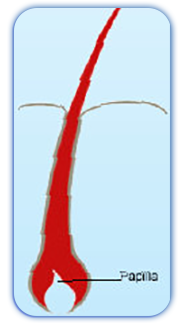Causes of Hair Growth
 Button
Button
Stopping Unwanted Hair Growth in Pennsylvania
There are many causes of hair growth, and it is impossible to list them all. What may cause hair growth in one person may not result in hair growth in another. The two leading causes can be classified as either biological or self-induced. Feri's Electrolysis can expertly identify the types of hair growth in Pennsylvania.

Biological Hair Growth
-
Genetic
Body hair growth can be hereditary and generic, based on race, nationality, and family.
-
Medication
The side effects of some medications may contribute to unwanted hair growth. What may affect one person may not affect others.
-
Stress
Stress is one of the major causes of unwanted hair growth. It can stimulate the adrenal glands to initiate a hormonal reaction that can cause excess hair growth.
-
Dysfunction of the Endocrine System
Malfunctions of the endocrine glands can trigger the appearance of excess hair. The endocrine glands in the human body consist of the hypothalamus, pituitary, pineal, thyroid, thymus, adrenals, pancreas, and gonads which will produce hormones. These hormones are secreted inside the body, and when one malfunctions, it could cause others to malfunction, resulting in unwanted hair growth.
-
Irregular Menstrual Cycles
Irregular menstrual cycles can cause excess hair growth due to hormone levels.
-
Ovarian Disorders & PCOS
Unwanted hair growth—particularly on the face, chest, abdomen, or back—can be triggered by several hormonal conditions, all of which involve an imbalance in androgens (male hormones) in the female body.
Polycystic Ovary Syndrome (PCOS): This common hormonal disorder affects women of reproductive age and is characterized by elevated androgen levels, irregular periods, and often, multiple small cysts on the ovaries. The excess androgens stimulate hair follicles, leading to hirsutism, or the growth of coarse, dark hair in areas typically associated with male-pattern hair.
Ovarian Hyperthecosis: A more severe form of hormonal imbalance, hyperthecosis occurs when the ovaries produce excessive androgens due to the presence of hormone-producing cells in the ovarian tissue. It can cause intense, widespread hair growth, often more severe than in PCOS. This condition may also increase the risk of ovarian tumors or cancer, especially in postmenopausal women, making it important to diagnose and monitor closely.
-
Thyroid Irregularities
Specific thyroid problems could cause unwanted hair.
-
Obesity
Obesity can cause the development of a synthetic androgen hormone that causes excess hair growth.
-
Fluctuations in Hormone Levels
Puberty, pregnancy, and menopause can also cause excess hair growth. During the regular systemic changes in a woman's life, hormone production varies. It is not uncommon for hormones during these times to be unbalanced.
Increased male hormones called androgens can be present, which may result in unwanted hair growth.
-
Menopause & Pregnancy
Both pregnancy and menopause involve major hormonal shifts that can affect hair growth in unexpected ways, including the appearance of unwanted body or facial hair.
During Pregnancy: The body produces higher levels of estrogen and androgens to support the developing fetus. These hormonal changes can increase hair growth all over the body. Some women may notice new, darker hair appearing on the abdomen, face, chest, or back. This is usually temporary and tends to return to normal postpartum as hormone levels stabilize.
During Menopause: Estrogen levels drop significantly, while androgen levels decline more slowly. This creates a relative increase in androgens, which can stimulate the growth of coarse, dark hair in areas typically more common in men, such as the chin, upper lip, or chest. This condition is known as hirsutism and can persist or worsen with age.
In both stages, the imbalance or shift in estrogen and androgen levels is the key factor driving changes in hair patterns. While pregnancy-related hair growth often fades after childbirth, menopause-related hair growth may be more persistent and require ongoing management.

Self-Induced Hair Growth
-
Tweezing
Tweezing is time-consuming and painful. It often causes hair to grow back thicker and heavier, and it can distort the follicle. This distortion makes it more difficult to permanently remove the hair through electrolysis.
-
Waxing
Waxing removes all hair, including the fine and vellus (peach fuzz) hairs. As a result, these finer hairs can become stimulated and grow back thicker over time. Additionally, both waxing and wearing tight clothing like corsets can distort hair follicles—not just for coarse, dark hairs, but also for fine and vellus hairs.
-
Shaving
Shaving does not damage the hair follicle, but it can irritate the skin—especially with daily use. To avoid visible stubble, especially on facial areas, frequent shaving is often necessary. Over time, shaving an area multiple times a week can lead to increased skin sensitivity and discomfort. The hair may also appear thicker, coarser, and stubbier, resulting in a look that many clients find unfeminine.
-
Depilatory Creams
Depilatory creams work similarly to shaving—they remove hair at the surface of the skin without using a razor. While effective, the results are comparable to shaving and may stimulate fine vellus hair to grow back darker and coarser.
These creams can also be highly irritating to the skin and may cause discoloration over time.
An example of our before and after work.

